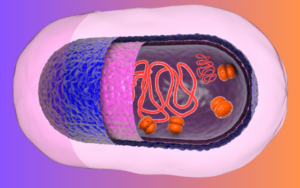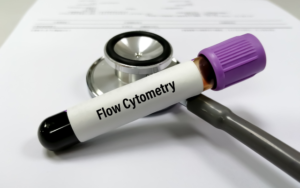In the world of molecular biology, there exists a revolutionary technique that has transformed research and diagnostics – the Polymerase Chain Reaction (PCR). Developed in 1983 by Kary B. Mullis, this groundbreaking method has become a cornerstone of modern genetic analysis. In this blog post, we will delve into the wonders of PCR, its applications, and how it continues to shape the landscape of scientific research.
Polymerase Chain Reaction, or PCR, is a laboratory technique used to amplify specific segments of DNA. By creating millions of identical copies of a targeted DNA sequence, PCR allows scientists to study, analyze, and detect DNA from minute samples. The process involves three key steps: denaturation, annealing, and extension. These steps are performed in cycles, leading to exponential amplification of the DNA of interest.
Table of Contents
The PCR Process

Polymerase Chain Reaction (PCR) is a powerful molecular biology technique that revolutionized the field of genetics. This innovative process allows scientists to amplify specific segments of DNA, enabling them to study and analyze genetic material with unprecedented precision. In this blog post, we will take you through the step-by-step process of PCR, shedding light on how this remarkable method works and its numerous applications.
1. Denaturation – Unzipping the DNA
The first step in PCR is denaturation. A small amount of the target DNA sample is heated to a high temperature, typically around 94-98°C. At this temperature, the double-stranded DNA molecule separates into two single strands. This “unzipping” of the DNA is crucial as it provides access to the specific region targeted for amplification.
2. Annealing – Primer Binding
Once the DNA strands are separated, the temperature is lowered to about 50-65°C during the annealing step. Short DNA segments called primers, which are designed to be complementary to the sequences flanking the target region, are added to the mix. The primers bind to their respective complementary sites on the single-stranded DNA template, marking the starting point for DNA synthesis.
3. Extension – DNA Replication
The temperature is raised to approximately 72°C during the extension step. At this temperature, a special heat-stable DNA polymerase enzyme begins to synthesize new DNA strands. This enzyme uses the single-stranded DNA templates and the bound primers to create complementary DNA strands. As a result, two new double-stranded DNA molecules are formed, each containing the targeted region.
4. Cycling – Exponential Amplification
The three steps of denaturation, annealing, and extension are repeated multiple times, usually between 20 to 40 cycles. This cycling process exponentially amplifies the targeted DNA segment. As each cycle progresses, the amount of the DNA of interest doubles, leading to an abundance of identical DNA copies.
5. Final Product – Millions of DNA Copies
By the end of the PCR process, millions of copies of the targeted DNA segment have been generated. These amplified DNA fragments can then be further analyzed using various techniques, such as gel electrophoresis, DNA sequencing, or hybridization methods, to glean essential information about the sample’s genetic makeup.
Applications of PCR

Polymerase Chain Reaction (PCR) is a molecular biology technique that has revolutionized the scientific landscape since its inception. Its versatility and precision have enabled researchers and scientists to unravel the mysteries of genetics and delve into various realms of scientific inquiry. In this blog post, we will explore ten fascinating applications of PCR, showcasing its impact on medical, environmental, and forensic fields, among others.
- Medical Diagnostics: PCR has emerged as a crucial tool in medical diagnostics. By identifying specific DNA sequences of pathogens or genetic mutations, it aids in the early detection of infectious diseases, hereditary disorders, and even certain types of cancer. Its rapid and accurate results have saved countless lives by enabling timely intervention and treatment.
- Genetic Profiling: PCR allows researchers to create a unique genetic profile of individuals through DNA fingerprinting. This application has found significant use in forensic science for identifying suspects, solving crimes, and exonerating the innocent. DNA evidence obtained from crime scenes can be amplified using PCR, providing valuable clues to investigators.
- Disease Research and Drug Development: PCR assists in studying the genetic basis of diseases, providing insights into their underlying mechanisms. Moreover, it plays a vital role in drug development by screening potential candidates against specific DNA targets, expediting the process of discovering new therapeutics.
- Environmental Studies: PCR is employed to detect and monitor microbial life in various environmental samples. This has implications in studying biodiversity, tracking pathogens in water sources, and understanding the ecological impact of human activities on the environment.
- Genetic Engineering: PCR is an integral part of genetic engineering techniques. It facilitates gene cloning, allowing scientists to amplify and manipulate DNA segments for insertion into other organisms. This has far-reaching implications in fields like agriculture, where genetically modified crops with desirable traits can be developed.
- Prenatal Testing: PCR has revolutionized prenatal testing by enabling non-invasive techniques for detecting genetic disorders in fetuses. It involves amplifying fetal DNA present in maternal blood, making it safer and more convenient than traditional invasive methods.
- Evolutionary Biology: By amplifying and analyzing ancient DNA, PCR has provided insights into evolutionary history and the relationships between different species. It has shed light on the origins and migrations of ancient human populations, enhancing our understanding of human evolution.
- Food Safety: PCR plays a vital role in ensuring food safety by identifying the presence of harmful pathogens, allergens, or genetically modified organisms in food products. It enables authorities to take preventive measures to protect public health.
- Veterinary Diagnostics: PCR has been instrumental in veterinary diagnostics, aiding in the detection of infectious diseases in animals. It has been particularly beneficial in managing outbreaks and preventing the spread of contagious diseases in livestock and wildlife.
- Archaeological Studies: PCR has opened up new frontiers in archaeology by allowing scientists to amplify and analyze DNA extracted from ancient remains. It has shed light on the genetic history of past civilizations and provided glimpses into ancient human populations and their interactions.
Overall, Polymerase Chain Reaction (PCR) stands as one of the most revolutionary and indispensable techniques in modern molecular biology. Its ability to amplify DNA segments with precision and speed has propelled research across various disciplines, including genetics, forensics, medicine, and biotechnology. By harnessing the power of temperature cycles and the thermostable DNA polymerase, PCR has enabled scientists to explore the intricacies of the genetic code and unlock new possibilities for disease diagnosis, personalized medicine, and environmental analysis.
As technology continues to evolve, PCR methods are becoming more sophisticated and accessible. Real-time PCR (qPCR) and digital PCR (dPCR) have emerged, offering quantification and absolute nucleic acid detection with enhanced sensitivity and accuracy. Moreover, with the integration of PCR into automated platforms, the turnaround time for experiments has significantly reduced, making it a cornerstone in high-throughput applications. As we move forward, it is certain that the enduring impact of PCR will drive groundbreaking discoveries, furthering our understanding of life’s complexities and driving progress towards a brighter future.




